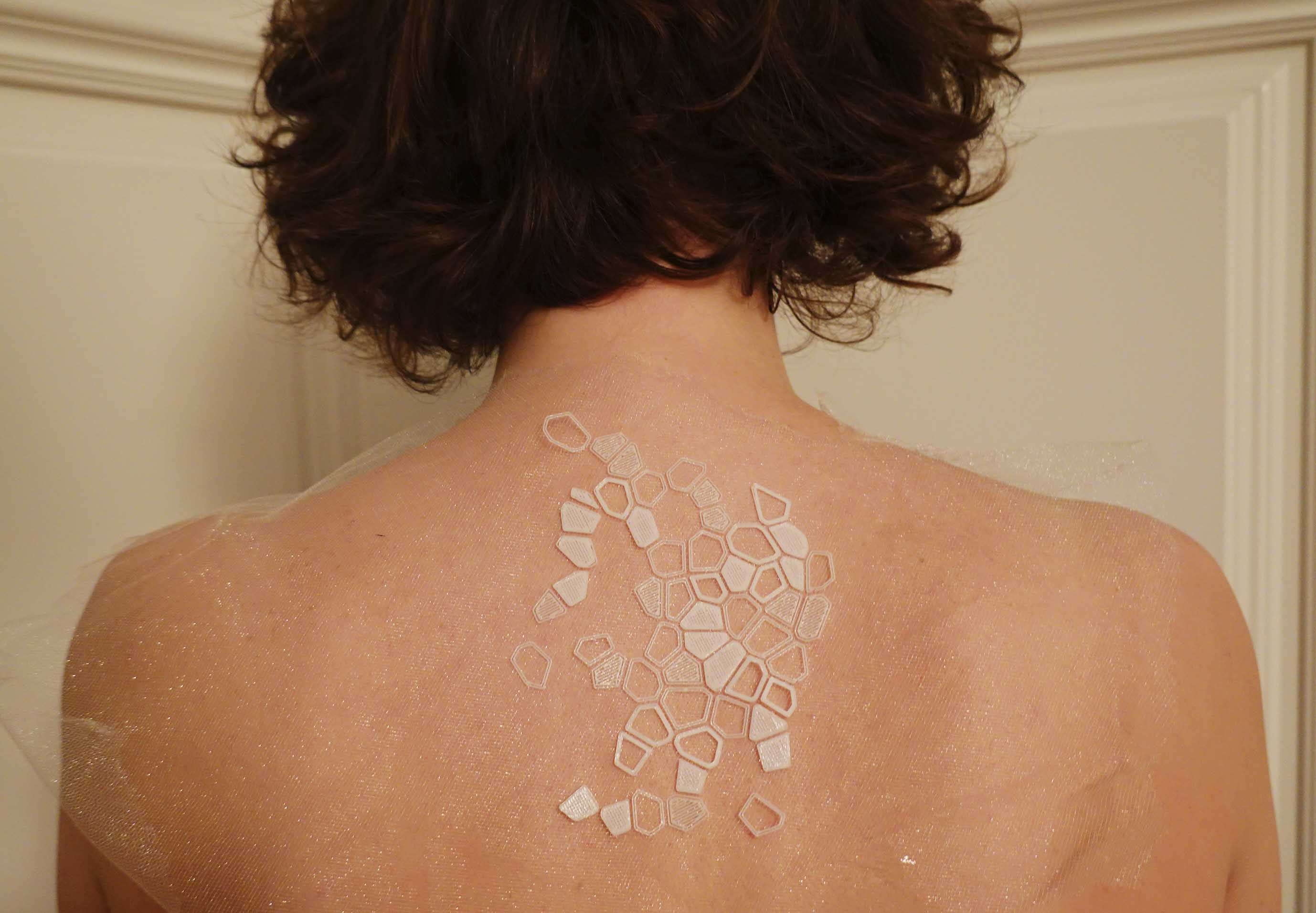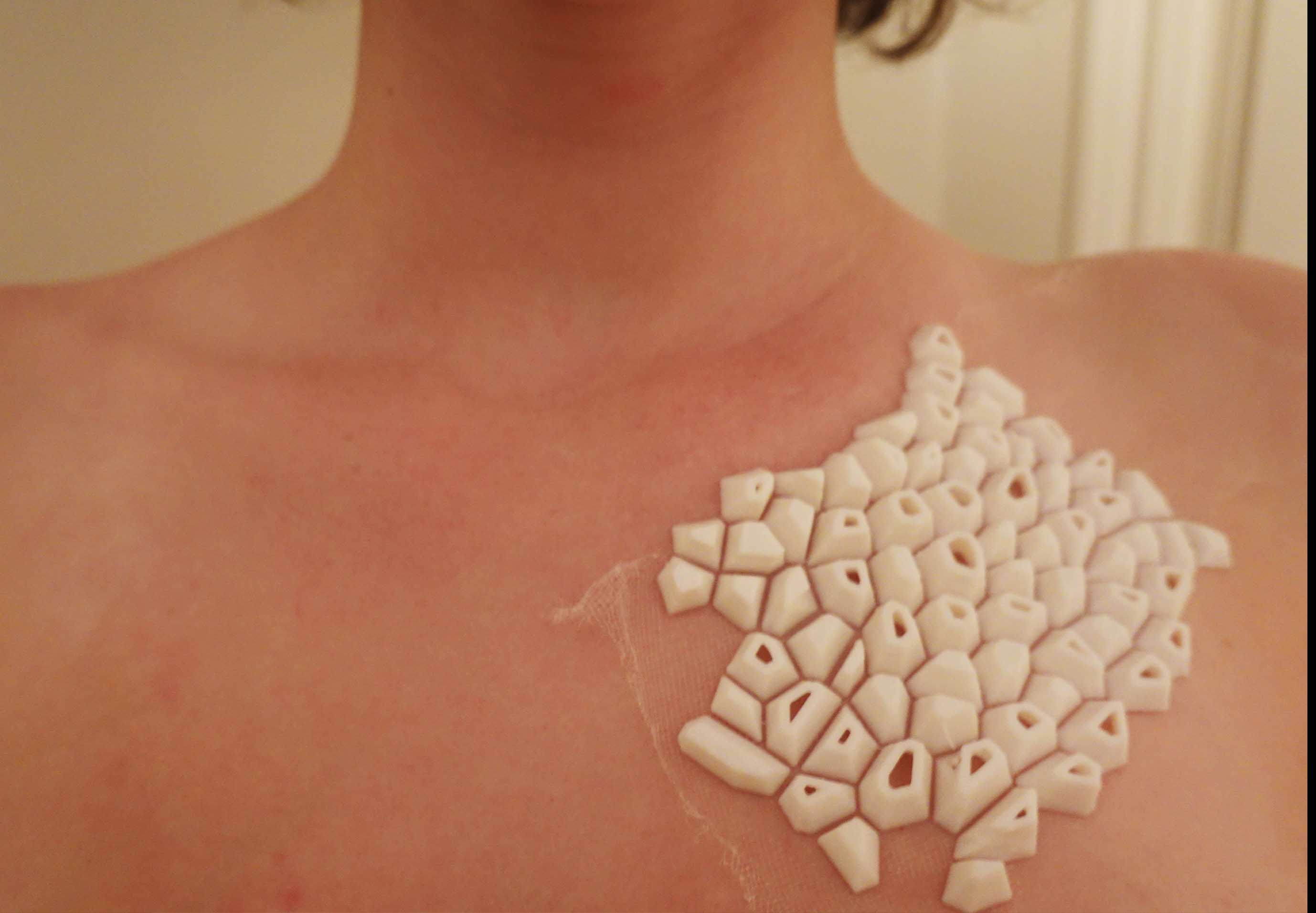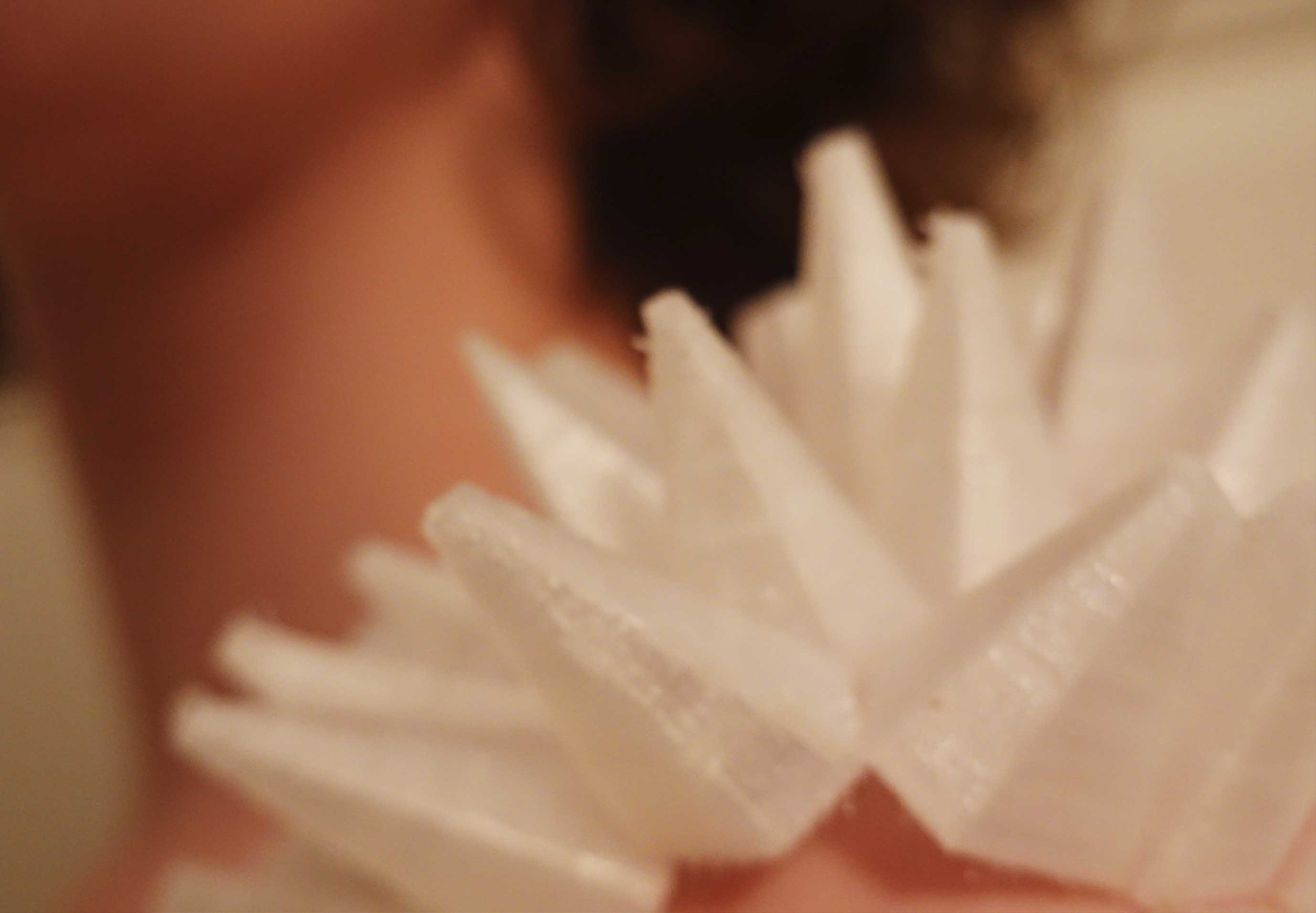Computational Couture¶
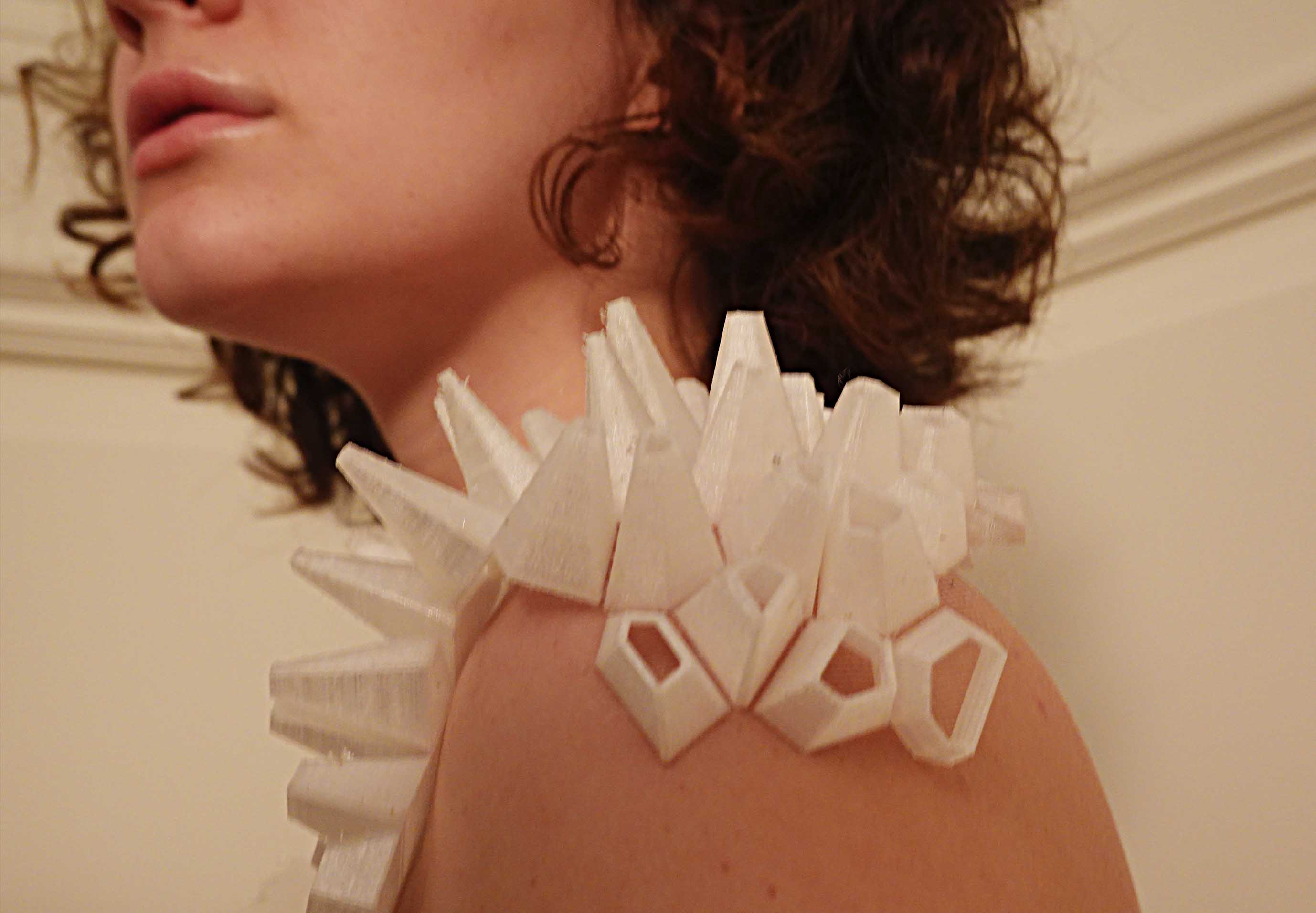
Process¶
Computational Couture We are so lucky to have access to a lot of different 3D printers in our lab. We had access to six small Sindoh printers, and one large Gigabot printer. Each printer had its own software that was very easy to use. After seeing the 3D printing introduction, I was inspired to try and do a little bit of everything.
I worked on many models this week, most of which never made it into physical space. This was a tough week and after working with the software I started to understand the constraints and it shifted my goals.
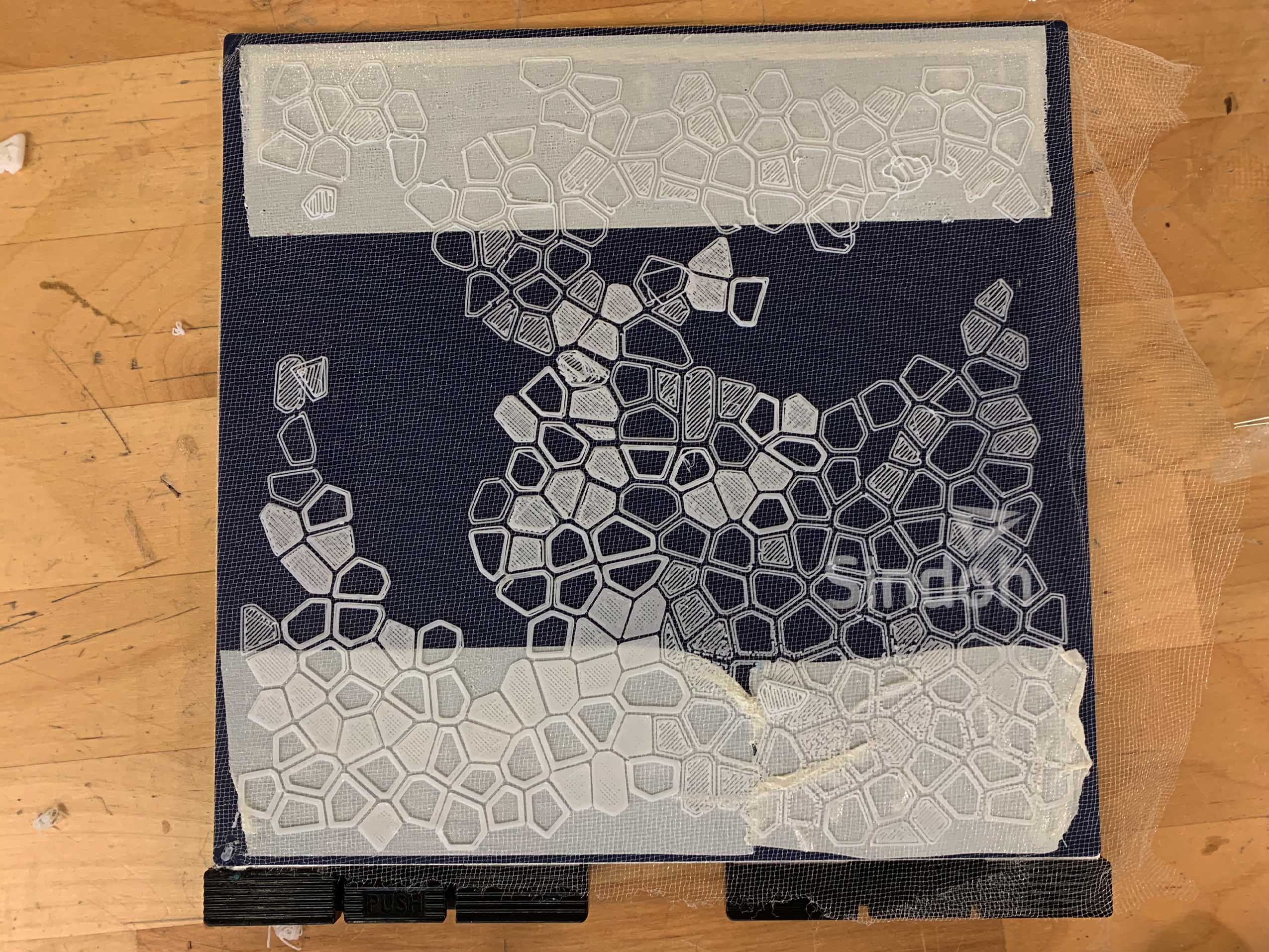
I was attracted to the 3D printing on fabric and I knew it was something that I wanted to try out. I started out with a simple print of tessellating hexagons. I wanted to see and feel how 3D printing on fabric worked and how it fell on the skin. I made four hexagon tests, two with 1mm between each body, and two with ½mm between each body. I also experimented with varied heights coming off of the hexagons. After the hexagon test I learned that 1mm between bodies was the ideal amount, it allowed for the fabric to still be able to bend and have some movement. I had some adhering issues with the fabric I chose because it wasn’t porous enough.

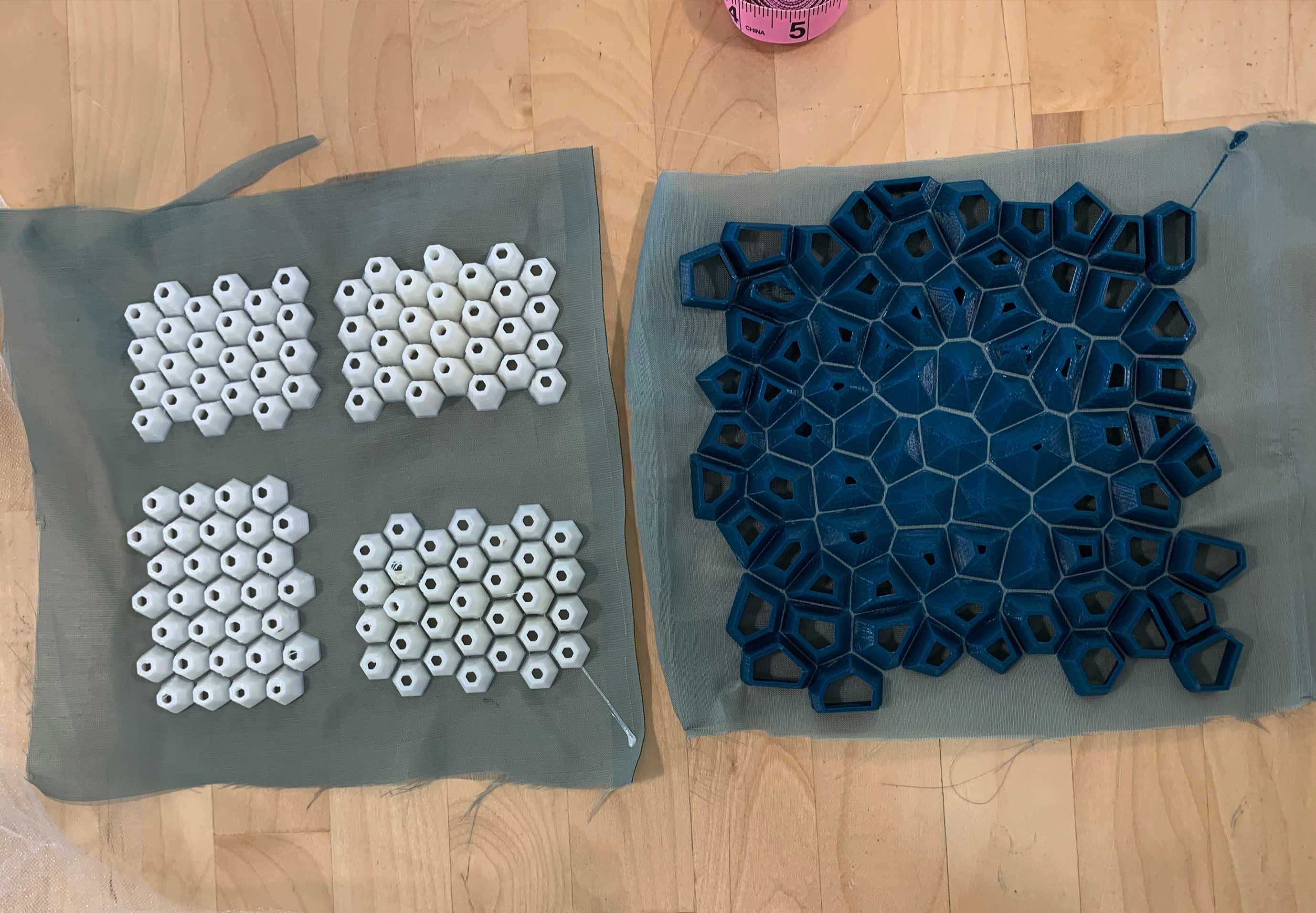
After I saw the hexagonal pattern in physical space, it seemed a little bland. It felt like an engineered pattern, and I was more interested in making it look organic. To do this I used the Voronoi pattern in grasshopper to create parametrized chaos. The Voronoi pattern responded to a point attractor in Rhino, which allowed me to change the hollowness of each body. With the Voronoi pattern I found that 1.5mm thickness for printing with 1mm in between each body worked the best.
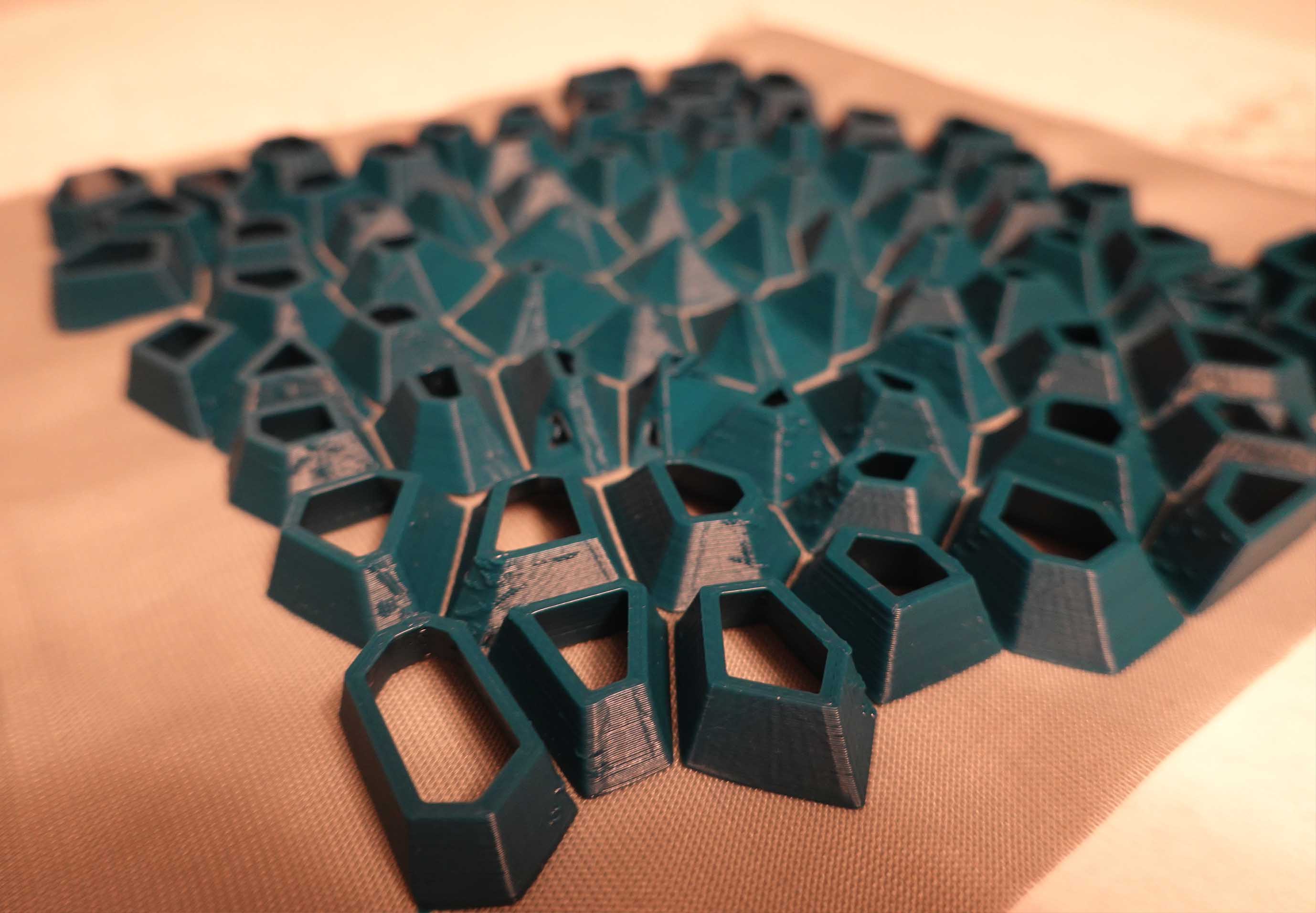

After I saw the Voronoi pattern in physical space, I got more curious about possibilities. I preferred the hollow bodies as opposed to the solid bodies, so I made more tests. I also noticed it didn’t fall over the body naturally. Each cell was so large that the fabric became pixelated. I wanted to see what the Voronoi pattern would look like if I varied the height. I made two more tests with the Voronoi pattern at ½ the scale, and also varied height. I printed these tests on tulle in hopes to get a better adhesion to the fabric.

Ultimately, I would love to make a pattern that looks like it is growing off of the body, and I think am getting closer.
While my Voronoi tests were printing, I also worked on another project to keep me busy. I was interested in making an exoskeleton that form fitted to the body. I pulled curves from a human form and brought them into grasshopper. From there I could loft the curves, and fiddle around with them until I was satisfied with the form. I baked the surfaces and brought them into rhino and started to combine the bodies manually into a polysurface.
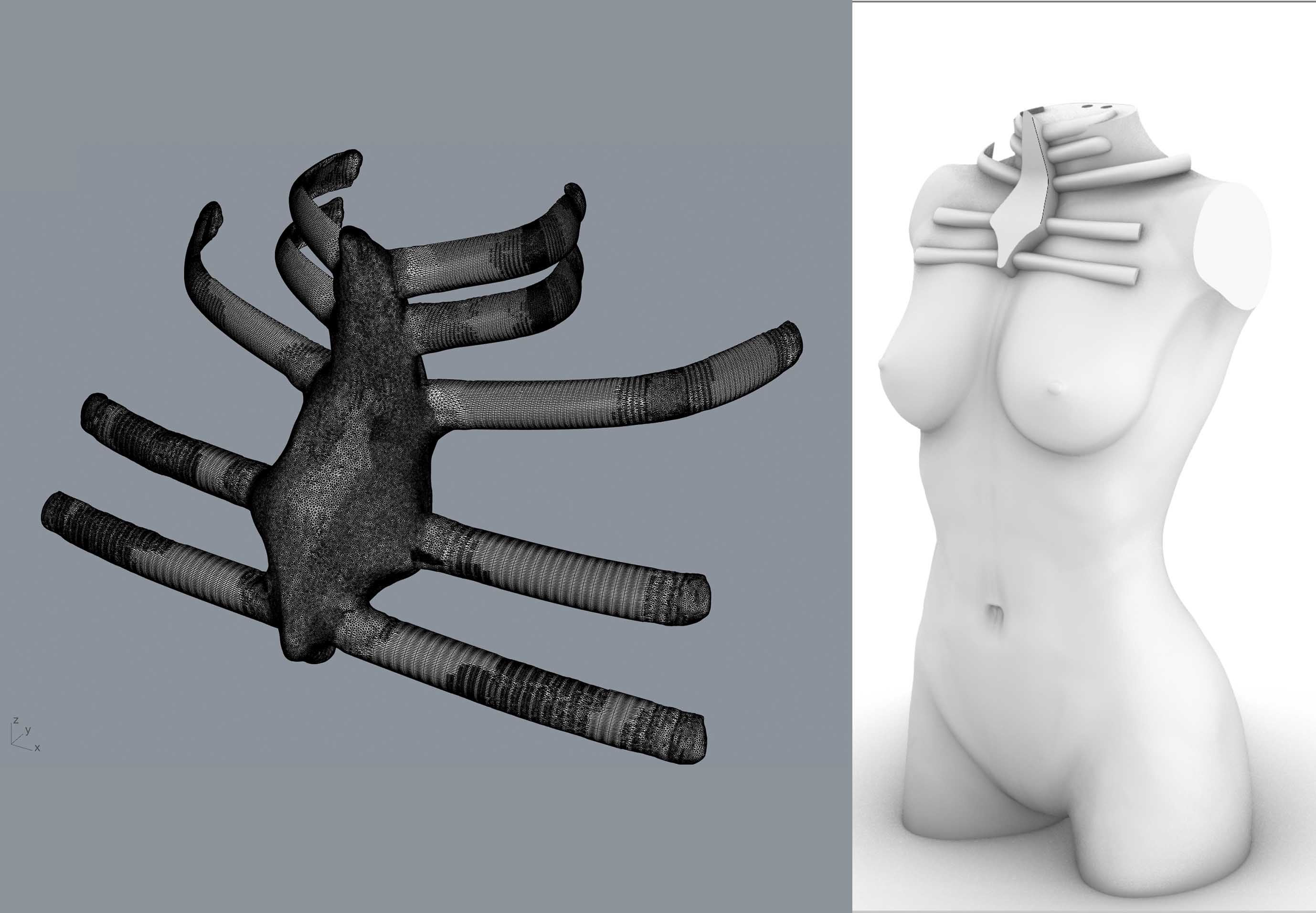
I ran into major problems with my polysurface, because some of the curves ended up being irregular. It was a nightmare, and I ended up needing to rebuild the center part of my exoskeleton. Of course, it took me 6 hours of trying and failing before I realized that was what I had to do.
Once I rebuilt the center and got the model to become a closed solid polysurface, I counted my blessings and left Rhino. I was so worried I would somehow corrupt the file again, I didn’t want to risk it. I imported the file into Meshmixer and put the finishing touches on the model there. Meshmixer ended up being the perfect software for me to bring my model into because it allowed me to sculpt the model. I was able to give the model an organic shape and form which I was not able to do in grasshopper.
I also worked on a third model, in hopes of utilizing the big 3D printer that I have access to. This project was a combination of the other two, and I was interested in creating a barnacle exoskeleton shroud. This was the most difficult project, and I haven’t yet been able to resolve the model to completion. I have been struggling with getting the voroni pattern to extrude using the normal line from the model. Every time I take a step back from the project for a day, I come back with new ideas, and I am slowly inching along to getting it to work. But I dream it will be a wearable shell that has Voronoi barnacles coming off of the model facing outward. Each barnacle will be hollow.

Final¶

